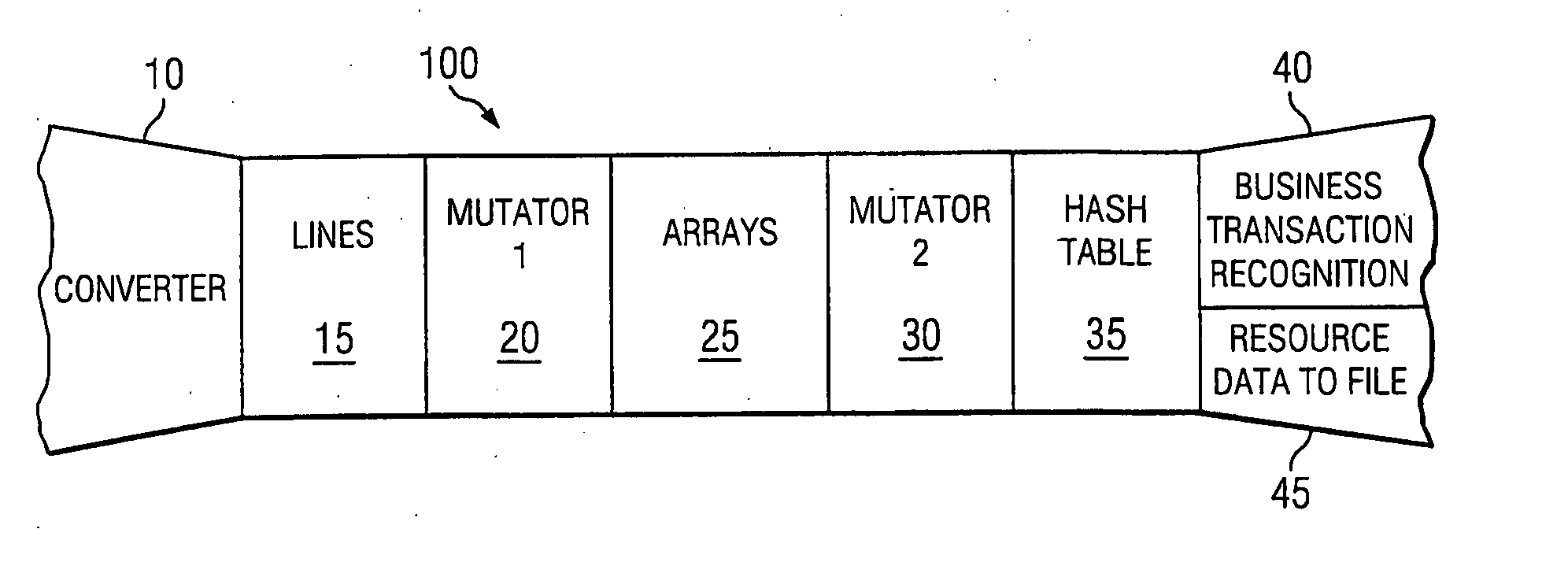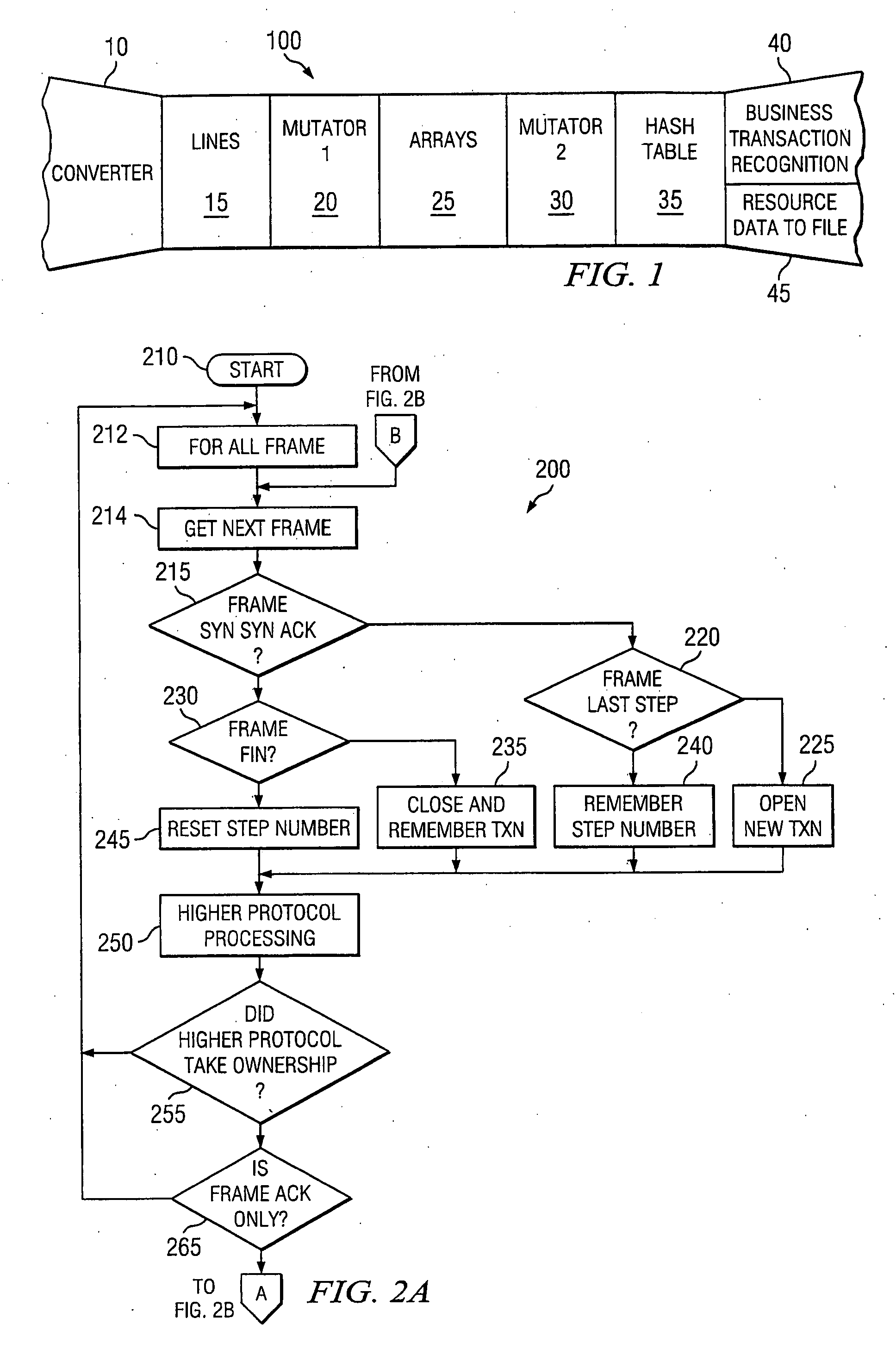Method of semi-automatic data collection, data analysis, and model generation for the performance analysis of enterprise applications
a semi-automatic, data collection technology, applied in error detection/correction, instruments, digital computers, etc., can solve the problems of high unreliability of rules of thumb for complex systems whose behavior is difficult to understand and predict, unsatisfactory end users, and expensive and ineffective, etc., to achieve easy utilization by application designers, eliminate needless network trace and network resource data, and raise the abstraction level available from this data
- Summary
- Abstract
- Description
- Claims
- Application Information
AI Technical Summary
Benefits of technology
Problems solved by technology
Method used
Image
Examples
Embodiment Construction
Data Collection Methodology
[0128] This invention includes a new methodology for collecting enterprise application performance data for the purposes of data analysis and model generation. The methodology is described by the following pseudocode: [0129] Methodology for collecting business transaction data [0130] Configure the application and infrastructure in a laboratory similar to the production application and infrastructure with each software component deployed on different servers connected by networks. [0131] For each business function: [0132] Write a load testing script mimicking the user's execution of this business function. [0133] Set up network sniffers between each tier of the enterprise application. [0134] Synchronize the clocks on each network sniffer. [0135] Initialize the network sniffer trace files and begin collecting data. [0136] Use the load testing script to drive the application with one instance of this business function. [0137] At the conclusion of the busine...
PUM
 Login to View More
Login to View More Abstract
Description
Claims
Application Information
 Login to View More
Login to View More - R&D
- Intellectual Property
- Life Sciences
- Materials
- Tech Scout
- Unparalleled Data Quality
- Higher Quality Content
- 60% Fewer Hallucinations
Browse by: Latest US Patents, China's latest patents, Technical Efficacy Thesaurus, Application Domain, Technology Topic, Popular Technical Reports.
© 2025 PatSnap. All rights reserved.Legal|Privacy policy|Modern Slavery Act Transparency Statement|Sitemap|About US| Contact US: help@patsnap.com



